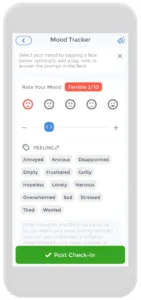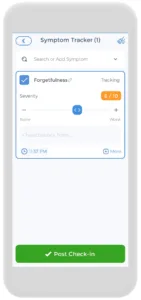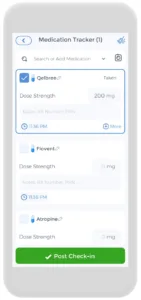Attention Deficit Hyperactivity Disorder (ADHD) is a common neurodevelopmental disorder that affects individuals of all ages. ADHD is characterized by symptoms such as inattention, hyperactivity, and impulsivity, which can have a significant impact on an individual’s daily life, including academic and social functioning. The underlying cause of ADHD is still an area of ongoing research and is not fully understood. However, scientists believe that there are both genetic and environmental factors underlying the condition.
Different individuals have different needs when it comes to treating ADHD. Some different treatment options include medications and therapy. For example, stimulants have been shown in clinical trials to be effective in reducing or treating ADHD symptoms. However, they can also have side effects such as insomnia, appetite suppression, and irritability. Additionally, some individuals may be hesitant to take stimulant medications due to their potential for abuse and dependence.
In recent years, non-stimulant medications have emerged as an alternative treatment option for patients with ADHD. Two non-stimulant medications commonly used to treat ADHD are Qelbree and Strattera. Non stimulant medication has been shown in controlled studies to be effective in reducing ADHD symptoms, but they work rather unlike stimulants.
In this article, we will explore the basics of ADHD and non stimulant medication commonly used to treat it. We will discuss how these medications work, their limitations and side effect effects, and compared head to head which non stimulant medication may be the best choice for different situations. Whether you are a parent of a child with ADHD, an adult with ADHD, or someone looking to learn more about these medications, this article will provide you with valuable information to make informed decisions about ADHD treatment.
ADHD: The Basics
What is ADHD
Attention Deficit Hyperactivity Disorder, commonly referred to as ADHD, is a neurodevelopmental illness that disrupts the brain’s capacity to control attention, behaviour, and emotions. It is a complicated condition that can appear in a variety of ways, but the three major symptoms are inattention, hyperactivity, and impulsivity.
ADHD is a widespread disease that affects 5-10% of children and 2.5% of adults globally. It can have serious consequences in daily life, such as difficulty in academic, social, and occupational situations. Individuals with ADHD, with correct diagnosis and treatment, can thrive and have full lives.
How Does ADHD Develop?
Combination of Genetic and Environmental Factors
The environment and genetic composition of a person are thought to play a role in the development of ADHD. According to studies, genetic factors account for around 70-80% of the variation in ADHD, indicating that it is highly heritable. Environmental factors, such as mother stress during pregnancy and prenatal toxicity exposure, have also been linked to an increased incidence of ADHD.
Heritability of ADHD
ADHD is highly heritable, with genetic variables accounting for up to 80% of the risk. The particular genes implicated in ADHD are yet unknown, but research suggests that numerous genes are involved, each of which contributes a modest percentage to a child’s risk of getting ADHD.
Environmental Risk Factors
Environmental factors, in addition to genetics, can contribute to the development of ADHD. Toxin exposure during pregnancy, such as lead, tobacco, and alcohol, has been related to an increased risk of ADHD. Stress in the mother during pregnancy has also been linked to an increased incidence of ADHD in offspring. Premature birth and low birth weight have also been identified as potential risk factors for ADHD.
ADHD symptoms
 ADHD symptoms are divided into three categories: inattentive, hyperactive-impulsive, and mixed. Inattentive ADHD is distinguished by issues with attention and focus, which frequently result in forgetfulness and disorganization. Hyperactive-impulsive ADHD is distinguished by impulsivity and hyperactivity, which makes it difficult to sit quietly and engage in impulsive behaviours. Combined ADHD is characterised by a combination of inattentive and hyperactive-impulsive symptoms.
ADHD symptoms are divided into three categories: inattentive, hyperactive-impulsive, and mixed. Inattentive ADHD is distinguished by issues with attention and focus, which frequently result in forgetfulness and disorganization. Hyperactive-impulsive ADHD is distinguished by impulsivity and hyperactivity, which makes it difficult to sit quietly and engage in impulsive behaviours. Combined ADHD is characterised by a combination of inattentive and hyperactive-impulsive symptoms.
Each subtype of ADHD manifests differently and presents its own set of obstacles. Individuals with inattentive ADHD, for example, may struggle with task completion and following through on commitments, whereas those with hyperactive-impulsive ADHD may struggle with impulse control and engaging in risky behaviours among other children.
It is critical to understand that ADHD is a complex condition that manifests differently in each individual. A correct diagnosis and knowledge of the individual’s symptoms are required for effective ADHD therapy and management.
Diagnosis of ADHD
ADHD diagnosis can be a difficult and time-consuming process. A healthcare provider will usually start with a thorough medical and psychological evaluation, which will include inquiries about the individual’s symptoms, medical history, and family history of ADHD. They may also provide cognitive and behavioural tests, such as IQ tests and attention tests, to evaluate the individual’s cognitive and executive functioning skills, as well as attention abilities.
To be diagnosed with ADHD, a person must match precise diagnostic criteria defined in the American Psychiatric Association’s Diagnostic and Statistical Manual of Mental Disorders (DSM-5). The DSM-5 identifies three primary criteria for diagnosing ADHD:
- The person must have a chronic pattern of inattention and/or hyperactivity-impulsivity that interferes with daily functioning in at least two separate situations (e.g., home, school, work).
- The symptoms had to have appeared before the age of 12.
- The symptoms must be unrelated to the individual’s developmental level and not entirely due to another medical or psychological issue.
It’s crucial to remember that diagnosing ADHD can be difficult because many of the symptoms overlap with other diseases like anxiety, depression, and bipolar disorder. As a result, a complete evaluation and assessment by a skilled healthcare practitioner is required for a good diagnosis.
How Is ADHD Managed?
Medications
People with ADHD can benefit from a variety of drugs, including stimulants and non-stimulants. The most typically given first line drugs for ADHD are stimulants such as methylphenidate and amphetamines. These drugs can aid with attention, impulsivity, and hyperactivity control. Other ADHD medications include nonstimulant medicines, such as atomoxetine and guanfacine, which can also be beneficial in the treatment of ADHD, especially in people who cannot tolerate stimulants. It’s crucial to remember that medicine isn’t a cure for ADHD, but rather a tool for managing symptoms.
Stimulants can be addictive for some individuals, especially if they are prone to addiction, so they should be used with caution. It is important to work with a healthcare provider and discuss the potential pros and cons of starting stimulant medication, as well as assessing one’s risk. The thought of addiction could also make an individual uncomfortable for a variety of reasons, so that is something to take into account.
Behavioral therapy
Behavioral therapy can be a useful supplement to medication for ADHD management. Therapy can help people with ADHD develop coping techniques and improve executive functioning skills including planning, organization, and time management. Cognitive-behavioral treatment (CBT), social skills training, and parent training are some examples of ADHD behavioral therapy. Behavioral therapy can be especially beneficial for children with ADHD since it teaches them skills that they can use throughout their lives.
people with ADHD develop coping techniques and improve executive functioning skills including planning, organization, and time management. Cognitive-behavioral treatment (CBT), social skills training, and parent training are some examples of ADHD behavioral therapy. Behavioral therapy can be especially beneficial for children with ADHD since it teaches them skills that they can use throughout their lives.
Lifestyle changes
Aside from medication and counseling, people with ADHD might benefit from lifestyle changes. Regular exercise can help lessen ADHD symptoms, increase mood, and improve general well-being. A balanced diet rich in fruits, vegetables, whole grains, and lean protein can also be beneficial. Avoiding meals heavy in sugar, artificial flavors, and preservatives may also aid in symptom relief. Good sleep habits, such as obtaining enough sleep each night and sticking to a regular sleep schedule, can also help with ADHD symptoms management.
Like with a lot of medical conditions, lifestyle is often an overlooked factor. However, by changing one’s daily habits, a large improvement can be seen over time.
Other treatments
Aside from medication, therapy, and lifestyle modifications, there are a number of other treatments that may be beneficial in the treatment of ADHD. Neurofeedback, for example, is a sort of therapy that employs computer-based activities to teach people with ADHD how to regulate their brainwaves. Mindfulness meditation and yoga may also be beneficial for stress reduction and improved focus.
It is crucial to recognize that ADHD management is frequently a long-term process that necessitates continuing support and monitoring. Working with an ADHD-specialized healthcare professional can be beneficial in building a thorough treatment plan that is tailored to an individual’s specific requirements and goals. Individuals with ADHD can have productive and satisfying lives by focusing on the correct combination of medication, counseling, and lifestyle modifications.[1][2][3][4]
Qelbree vs Strattera: Which ADHD Medication Is Right for You?
ADHD is typically treated with ADHD medications, such as Qelbree and Strattera, which can reduce ADHD symptoms. In this section, we will compare and contrast these two medications and discuss which one may be right for you.
 What is Qelbree?
What is Qelbree?
Qelbree is a non-stimulant, FDA-approved medication used to treat ADHD in children and adolescents aged 6 to 17 years old. It contains the active ingredient viloxazine, which is a selective norepinephrine reuptake inhibitor (NRI). Viloxazine works by increasing the levels of norepinephrine, a neurotransmitter that regulates attention, mood, and behavior.
How does Qelbree work for ADHD?
Qelbree contains the active ingredient viloxazine, which is a selective norepinephrine reuptake inhibitor (NRI). Norepinephrine is a neurotransmitter that plays a key role in regulating attention, mood, and behavior. In individuals with ADHD, there is often a deficiency in norepinephrine activity, which can lead to symptoms such as inattention, hyperactivity, and impulsivity.
Viloxazine works by blocking the reuptake of norepinephrine, which allows it to stay in the synapse longer and increase its activity in the brain. By increasing the levels of norepinephrine, Qelbree can help improve attention, reduce hyperactivity and impulsivity, and improve overall functioning in individuals with ADHD.
What are the limitations and side effects of Qelbree?
Limitations:
- Qelbree is currently only approved for use in children ages 6 to 17 years old with ADHD. It is not approved for use in adults or for the treatment of other conditions.
- Qelbree is a new medication, and there is limited long-term data available on its safety and effectiveness.
Side Effects:
- The most common side effects of Qelbree include sleepiness, decreased appetite, nausea, vomiting, and stomach pain.
- Qelbree may also cause a temporary increase in heart rate and high blood pressure.
- In rare cases, Qelbree may cause more serious side effects such as liver injury or suicidal ideation.
What is Strattera?
Strattera is another non-stimulant, FDA approved medication used to treat ADHD. It contains the active ingredient atomoxetine, which is also a selective NRI. Atomoxetine works by increasing the levels of norepinephrine in the brain, similar to Qelbree. However, Strattera also has some mild dopamine reuptake inhibition properties. Strattera is approved for use in children, adolescents, and adults with ADHD.
How does Strattera work for ADHD?
Strattera contains the active ingredient atomoxetine, which is also a selective NRI (selective norepinephrine reuptake inhibitors). However, unlike Qelbree, atomoxetine also has some mild dopamine reuptake inhibition properties. Dopamine is another neurotransmitter that plays a key role in reward, motivation, and pleasure.
Atomoxetine works by blocking the reuptake of both norepinephrine and dopamine, which increases their activity in the brain. By increasing the levels of these neurotransmitters, Strattera can help improve attention, reduce hyperactivity and impulsivity, and improve overall functioning in individuals with ADHD.
What are the limitations and side effects of Strattera?
Limitations:
- Strattera is not a stimulant medication, but it can take several weeks to reach its full effectiveness. In some cases, it may not be effective for certain individuals with ADHD.
- Strattera is not approved for use in children under the age of 6 years old.
Side Effects:
- The most common side effects of Strattera include stomach upset, decreased appetite, nausea, vomiting, dizziness, and fatigue.
- Strattera may also cause an increase in heart rate and high blood pressure.
- In rare cases, Strattera may cause more serious side effects such as liver injury or suicidal thoughts and behaviors.
Which medication should you use?
The decision to use Qelbree or Strattera will depend on various individual factors and specific circumstances, such as medical history, age, individual response to the medication, and severity of symptoms. It’s important to discuss the potential benefits and risks of each medication with a healthcare provider to determine which medication is the best choice for an individual.
Here are some specific situations where one medication may be more appropriate than the other:
- Children and adolescents with ADHD: Qelbree is currently approved for use in children ages 6 to 17 years old with ADHD, while Strattera is approved for use in children ages 6 and older. However, Strattera may take several weeks to reach its full effectiveness, whereas Qelbree may have a faster onset of action. In general, the choice between Qelbree and Strattera in children and adolescents may depend on individual patient factors and the severity of symptoms.
- Patients with comorbid conditions: Strattera may be a better choice for individuals with ADHD who also have comorbid conditions such as anxiety or depression, as it may have some beneficial effects on these conditions. Qelbree, on the other hand, has not been studied extensively in patients with comorbid conditions and would need to be carefully monitored.
- Patients with a history of substance abuse: Qelbree may be a better choice for individuals with a history of substance abuse, as it is not a controlled substance and has a lower risk of abuse potential compared to stimulant medications. Strattera, on the other hand, may have a slightly higher risk of abuse potential and is a controlled substance. Furthermore, it is important to be cautious in patients with suicidal thoughts.
- These medications work differently from stimulants, which means they can affect your daily activities in different ways too. If you’re taking Strattera and want to stay active, learning about strattera and exercise can help you get the most from both your medication and workouts. Many people find that understanding how their ADHD medication interacts with physical activity helps them feel more confident about their treatment plan.
Using an App to Help with ADHD Medications
Attention Deficit Hyperactivity Disorder can be difficult to deal with for patients, especially when it causes impulsive behavior or other mental health issues. The various different medications can be extremely overwhelming, with all the different drug interactions, allergic reactions, and side effects. It is understandable why most patients would have a lot of difficulties.
However, the CareClinic can make things a lot easier. The app has a dedicated diary section that allows you to write down all the things that you need to complete. Furthermore, other things on the app include a medication section, where you can track all the medications you are taking and get daily reminders for them, and a symptoms section, where you can record all the symptoms you experience. Next time you visit the doctor, all this information will be handy in your pocket![11]
Conclusion
In conclusion, Qelbree and Strattera are two non-stimulant medications commonly used to treat ADHD. While they work differently than stimulant medications, they have been shown to be effective in reducing ADHD symptoms. Qelbree works by targeting the norepinephrine system in the brain, while Strattera works by increasing levels of the neurotransmitter norepinephrine in the brain. Both of these nonstimulant medications have limitations and potential side effects, and the choice between them will depend on individual circumstances and preferences.
If you or a loved one is considering medication for ADHD, it is important to work with a healthcare or mental health provider to determine the best treatment plan. This may include a combination of medication and behavioral therapy. It is also important to be aware of potential side effects and to report any concerns to your healthcare provider.
References
- “The global prevalence of attention deficit hyperactivity disorder in children and adolescents: An umbrella review of meta-analyses – PubMed”. https://pubmed.ncbi.nlm.nih.gov/37495084/
- “The prevalence of adult attention-deficit hyperactivity disorder: A global systematic review and meta-analysis – PubMed”. https://pubmed.ncbi.nlm.nih.gov/33692893/
- “ADHD Linked to the Air Pregnant Women Breathe”. https://time.com/3558710/adhd-pregnancy-pollution/
- “Nutritional epigenetics”. https://en.wikipedia.org/wiki/Nutritional_epigenetics
- “Qelbree (viloxazine extended-release capsules) | CenterWatch”. https://www.centerwatch.com/directories/1067-fda-approved-drugs/listing/4698-qelbree-viloxazine-extended-release-capsules
- “Atomoxetine – StatPearls – NCBI Bookshelf”. https://www.ncbi.nlm.nih.gov/books/NBK493234/
- “Atomoxetine: a review of its use in attention-deficit hyperactivity disorder in children and adolescents – PubMed”. https://pubmed.ncbi.nlm.nih.gov/19445548/
- “Viloxazine (Qelbree): A Faster Strattera? | 2021-06-20 | CARLAT PUBLISHING”. https://www.thecarlatreport.com/blogs/2-the-carlat-psychiatry-podcast/post/3465-viloxazine-qelbree-a-faster-strattera-
- “Viloxazine”. https://en.wikipedia.org/wiki/Viloxazine
- “Atomoxetine”. https://en.wikipedia.org/wiki/Atomoxetine
- “Evaluation of the effectiveness of the FOCUS ADHD App in monitoring adults with attention-deficit/hyperactivity disorder – PubMed”. https://pubmed.ncbi.nlm.nih.gov/37341028/
- “Nonstimulant ADHD Meds: Types and Side Effects | Psych Central”. https://psychcentral.com/adhd/non-stimulant-adhd-meds
- “What Are the Differences Between Qelbree vs. Strattera for ADHD? – GoodRx”. https://www.goodrx.com/conditions/adhd/qelbree-vs-strattera-for-adhd
- Centers for Disease Control and Prevention. (2021). Attention-deficit/hyperactivity disorder (ADHD). Retrieved from https://www.cdc.gov/ncbddd/adhd/data.html
- MayoClinic (2023). Adult attention-deficit/hyperactivity disorder (ADHD). https://www.mayoclinic.org/diseases-conditions/adult-adhd/symptoms-causes/syc-20350878
- National Institute of Mental Health. (2021). Attention-deficit/hyperactivity disorder. Retrieved from https://www.nimh.nih.gov/health/topics/attention-deficit-hyperactivity-disorder-adhd/index.shtml



 What is Qelbree?
What is Qelbree?